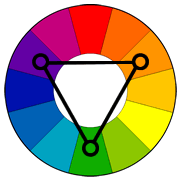
Stewart White 라는 수채화가가 쓴 수채화를 그릴 때 도움이 되는 좋은
글이 있어 옮긴다 ( 번역은 구글 번역, 영어 원문은 맨 마지막에 )
===========================================================================
"저는 제 인생의 대부분을 한 장소에서 다른 장소로 여행하며 보낸 것 같습니다."라고
스튜어트 화이트는 말합니다. "제 기억을 간직하기 위해 저는 스케치를 많이
그렸습니다. 얼마 지나지 않아 저는 작은 수채화 키트를 어디든 가지고 다녔습니다.
명백한 편의성(물, 물, 모든 곳) 외에도 휴대성이 뛰어나고, 가장 좋은 점은 빨리
마르는 것입니다. 저는 붓을 한 번만 칠해도 적당한 양의 물로 분위기를 조성할 수
있다는 것을 알게 되었습니다. 젖은 상태에서 젖은 상태로 작업하면 한 번에 많은 사람을
그릴 수 있습니다. 저에게는 야외에서 그림을 그리는 데 가장 훌륭한 매체입니다.

"수채화는 야외에서 그리는 게 쉬운데, 어느 정도 어려움이 있습니다.
유화를 그리는 친구들은 24 x 36인치 이상의 캔버스를 다루는 건 두 번
생각하지 않지만, 저는 현장에서 큰 그림을 다루는 일은 거의 없습니다.
건조 시간을 늦추기 위해 종이에 계속 스프레이를 뿌려야 하는 건 너무 성가신 일입니다.

"초보자가 수채화를 처음 접하는 데 있어 가장 큰 어려움은 작품을
신선하고 깨끗하게 유지하는 것이라고 생각합니다. 자신감이 필요합니다.
그냥 해야죠. 너무 많은 부분을 칠하고 그 위에 페인트를 칠하려고 하면
대개 재앙으로 이어질 수 있습니다. 이를 돕기 위해 저는 D.O.N.T.를 생각해냈습니다.
1. Dont Dillute :희석하지 마세요. 약한 그림은 페인트를 충분히
사용하지 않아서 생깁니다.
2. Dont Overwork :너무 많은 부분을 칠하지 마세요. 언제 멈출 때인지 알아야 합니다.
3. Dont Nullify :무효화하지 마세요. 표시를 하기 전에 표시를 하고 싶은지 알아야 합니다.
그리고 표시를 한 후에는 지우려고 하지 마세요. 그렇지 않으면 진흙투성이가 될 뿐입니다.
수채화는 모든 것을 드러냅니다.
4. Dont Try to fix it :고치려고 하지 마세요. 붓털이 물에 들어가면 그대로 두세요.
영역을 만지작거리면 더 악화될 뿐입니다.
"수채화의 고유한 특성을 최대한 활용하기 위해 화가는 표현을 달성하는
것과 매체의 재미있고 예측할 수 없는 특성을 사이에서
균형을 찾으라고 권장합니다. 대상의 추상적 특성이 당신의 그림 실력과
결합되어 빛과 견고한 형태의 마법적 환상을 만들어내는 지점을 목표로 하세요.
수채화의 목적은 자연을 모방하는 것이 아니라 야외에 있는 것과 자연의 광경을
즐기는 것의 덧없는 인상을 재현하는 것입니다.”



























“It seems I’ve spent most of my life traveling from one place to another,” says Stewart White. “To save my memories, I sketched … a lot. Before long, I was taking a small watercolor kit with me everywhere. Besides its obvious conveniences (water, water, everywhere), it’s portable and, the best part, it dries quickly. I find that atmosphere can be created with just one stroke of a brush and the right amount of water. Working wet-into-wet, I can paint an entire crowd of people at one go. To me, it’s the most obvious of all media for painting outside.
“As easy as I find watercolor to paint with en plein air, it does present certain challenges. My oil painting friends wouldn’t give a second thought to hitting a 24 x 36-inch or larger canvas, but I don’t often tackle anything large on location. It’s too annoying to have to keep spraying the paper to slow down the drying time
“I think the biggest challenge beginners have with watercolor is keeping the work fresh and clean. It takes confidence; it just does. Overworking areas and trying to paint over areas are usually a recipe for disaster. To help, I came up with a sort of negative tip anagram, D.O.N.T.
- Don’t Dilute. Weak paintings are a result of not using enough paint.
- Don’t Overwork. You have to learn to recognize when it’s time to stop.
- Don’t Nullify. Know the mark you want to make before you make it. And once it’s made, don’t try to erase it; it just gets muddy otherwise. Watercolor reveals everything.
- Don’t Try to fix it. If a brush hair gets in the wash, leave it be. Fussing with an area only makes it worse.
“To make the best use of watercolor’s unique qualities, I would encourage painters to look for a balance between achieving representation and celebrating the playful, unpredictable nature of the medium. Aim for the point at which the abstract qualities of the subject combine with your drawing skills to create a magical illusion of light and solid form. The purpose of watercolor painting is not to copy nature but to recreate the fleeting impression of being outdoors and enjoying the spectacle of nature.”
'그림공부' 카테고리의 다른 글
| ( 그림공부 ) 매일 그림 연습을 위한 10가지 팁 (4) | 2024.09.14 |
|---|---|
| ( 그림공부 ) 물에 반사된 수채화 그리기 (2) | 2024.08.31 |
| ( 그림공부 ) Painting under pressure (0) | 2024.08.21 |
| ( 그림 공부 ) Reflections on Painting Water (0) | 2024.08.08 |
| ( 그림공부) 그림자를 제대로 표현하기 (0) | 2024.08.02 |




